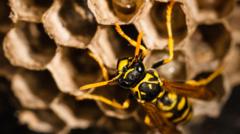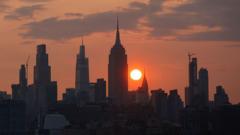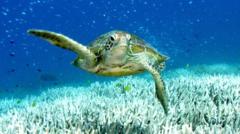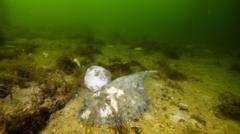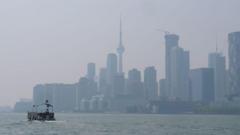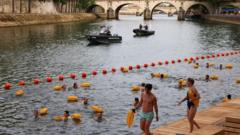Recent discoveries of hazardous contaminants in debris washed ashore have triggered swift action by local authorities in Sydney's Northern Beaches region.
Mysterious Marine Debris on Sydney Beaches Found to Contain Harmful Bacteria

Mysterious Marine Debris on Sydney Beaches Found to Contain Harmful Bacteria
Authorities investigate debris causing beach closures amid rising health concerns.
Nine beaches in Sydney were temporarily shut down on January 14 after marble-sized balls began appearing along the shores. The Northern Beaches Council has established that these enigmatic formations contain saturated fatty acids along with E. coli and other faecal bacteria, prompting a thorough investigation by the New South Wales Environment Protection Authority (EPA).
The beach closures impacted popular destinations such as Manly and Dee Why, echoing the environmental crisis triggered months earlier in October when similar black blobs were discovered. This previous incident led to beach closures and extensive clean-up efforts, raising awareness about potential contamination.
This latest discovery included debris that has now been identified as containing volcanic rock pumice in addition to the harmful acids and bacteria. Northern Beaches mayor, Sue Heins, expressed hopes that the EPA's analysis would shed light on the source of the debris, emphasizing the need to prevent future occurrences and protect the community's health.
The local council has been proactive, conducting regular beach inspections and urging residents to report any sightings of the mysterious balls to the authorities. The initial debris from October initially prompted misleading descriptions, with "tar balls" being a popular term before testing revealed a diverse range of materials, including cooking oil, soap scum, and even traces of medicinal substances.
In a bid to assuage public fears, Sydney Water stated that all operations at their water treatment plants are functioning correctly and claimed no abnormalities have been detected in the waste systems across the city. These assurances, however, do little to quell the concerns raised by scientists who likened the blobs to "fatbergs," tricky fat and grease accumulations commonly seen in sewage systems. As investigations proceed, the community remains on high alert for any further environmental hazards along their beloved beaches.
The beach closures impacted popular destinations such as Manly and Dee Why, echoing the environmental crisis triggered months earlier in October when similar black blobs were discovered. This previous incident led to beach closures and extensive clean-up efforts, raising awareness about potential contamination.
This latest discovery included debris that has now been identified as containing volcanic rock pumice in addition to the harmful acids and bacteria. Northern Beaches mayor, Sue Heins, expressed hopes that the EPA's analysis would shed light on the source of the debris, emphasizing the need to prevent future occurrences and protect the community's health.
The local council has been proactive, conducting regular beach inspections and urging residents to report any sightings of the mysterious balls to the authorities. The initial debris from October initially prompted misleading descriptions, with "tar balls" being a popular term before testing revealed a diverse range of materials, including cooking oil, soap scum, and even traces of medicinal substances.
In a bid to assuage public fears, Sydney Water stated that all operations at their water treatment plants are functioning correctly and claimed no abnormalities have been detected in the waste systems across the city. These assurances, however, do little to quell the concerns raised by scientists who likened the blobs to "fatbergs," tricky fat and grease accumulations commonly seen in sewage systems. As investigations proceed, the community remains on high alert for any further environmental hazards along their beloved beaches.


